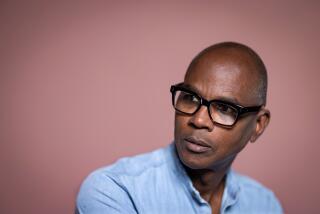THE ‘80s A Special Report :...
The fashionable French thinker of the decade and reigning high priest of media theory, Jean Baudrillard has taken a sizable segment of the art world by storm, and the list of artists who cite him as a central influence is long indeed (Haim Steinbach, Bruce and Norman Yonomoto, Meyer Vaisman, Jeff Koons, Peter Nagy, Robert Longo, to name a few).
Espousing a line of thought that begins with Baudelaire, reaches critical mass with Warhol and borrows heavily from Marshall McLuhan and Buckminster Fuller, Baudrillard isn’t a particularly original thinker. He’s filched more than a few bits from his fellow French theorists Roland Barthes, Michel Foucault, Paul Verdier, and Jean Francois Lyotard, in fact. Nor are his ideas--your basic Marxist post-structuralism--remotely revolutionary at this point.
Rather, the thing that has catapulted him into celebrityhood is his flair for parlaying the superficial into the epic, and his fearless embrace of radical overstatement and bitchy bon mots that read like ad copy.
Now 60, Baudrillard has written 18 books, all of which restate his central theory which boils down to this: The unending torrent of images that deluge modern life have debased reality to the point that reality no longer exists.
Wrapping this modest idea in fancy packaging of Semiotic theory, psycho babble and the philosophy of provocation spawned by Dadaism, Baudrillard has been hailed as a major mind by the art world and his ideas have presaged a crisis of faith in the trancsendent power of art. Baudrillard’s entire position is based in the assumption that the public is utterly passive. This belief can currently be seen reflected in the abundance of art that announces to the viewer: “of course I’m false and empty--what were you expecting? What in your life isn’t false and empty?”
The Taste Makers project was edited by David Fox, assistant Sunday Calendar editor.
More to Read
The biggest entertainment stories
Get our big stories about Hollywood, film, television, music, arts, culture and more right in your inbox as soon as they publish.
You may occasionally receive promotional content from the Los Angeles Times.










